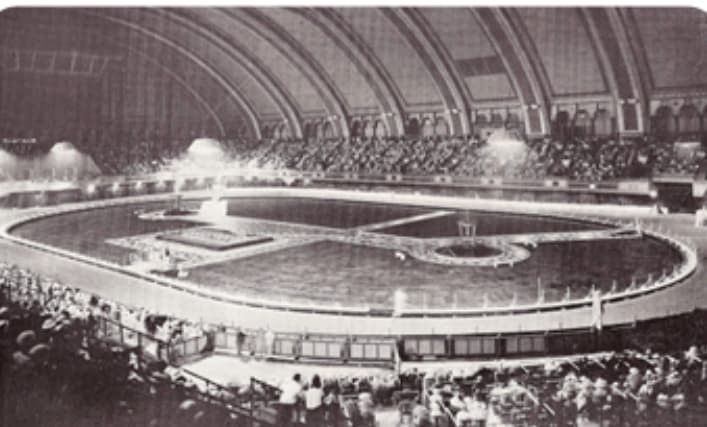The chronicles of greyhound racing in the United States narrate a story of drama, undulations, and historical shifts. The sport endured the challenges of the Great Depression in the 1930s, experienced its pinnacle with immense popularity during the 70s and 80s, and grappled with the influence of gangster syndicates and government regulations.
Substantial and warranted criticism from animal rights activists at the turn of the century marked the industry's decline, tainted by human greed and cruelty. In her insightful analysis, "The History of Greyhound Racing in the United States," Christine A. Dorchak, Esq., President of GREY2K USA Worldwide, delves into these intricacies and more.
Established in February 2001, GREY2K USA Worldwide stands as a prominent non-profit organisation dedicated to safeguarding greyhounds in the United States. The group actively advocates for the enactment of robust laws protecting greyhounds and strives to eliminate cruelty to animals on both national and global fronts.
In 1919, Owen Patrick Smith constructed the first commercial greyhound racing track in Emeryville, California. The oval track, featuring Smith's ingenious invention of a mechanical hare, proved to be a humane alternative to the live baits used in coursing.
The races at the hippodrome captivated audiences to such an extent that, by 1930, competitions were held on 67 tracks across the country. Initially, the artificial hare "ran" along the outer guide; subsequently, the inner guide became the norm. Athletes initially sported coloured collars for identification, later replaced by running jackets. In the industry's nascent stages, few runners participated, making competition between two greyhounds a common occurrence. Eventually, up to eight animals were released onto the track.
Florida emerged as the pioneering state to legalise greyhound racing. In 1931, Governor Doyle E. Carlton's Equality Act laid the legislative foundation. By 1935, Florida boasted ten licensed tracks. Greyhound racing found legal status in Oregon in 1933 and in Massachusetts in 1934. Arizona joined this league in 1939, becoming the fourth state to host greyhound racing during the Great Depression.
Despite protests from charities and religious organisations, the greyhound racing industry gained momentum. The states of Colorado and South Dakota legalised racing in 1949.
The 1970s and 1980s witnessed greyhound racing being legalised in 19 states across the United States, marking the zenith of the industry, ranking sixth in the hierarchy of popular sports.
In 1926, Owen Patrick Smith established the International Greyhound Racing Association. The American Greyhound Track Owners Association (AGTOA) formed in Florida in 1946, while the National Greyhound Association (NGA), renamed in 1973, remains the sole racing greyhound registry in North America, based in Abilene, Kansas.
To draw the public to the races, racetracks organised promotional events and featured appearances from beauty pageant winners, baseball stars, and other celebrities. The popularity of horse racing reached such heights that organised crime became entwined with the industry. Figures like Joe Linsey, a convicted bookmaker, owned several tracks in Massachusetts and Colorado. Gangsters Meyer Lansky, Bugsy Siegel, Lucky Luciano, and Al Capone exerted control over racing at Hawthorne Racetrack in Illinois, Miami Beach, and Hollywood. The US Senate Select Committee on Organised Crime in 1950 uncovered that the Chicago Mafia controlled the state racing commission, effectively dominating greyhound racing in Florida by using money to influence politicians.
On numerous occasions, greyhound breeders, kennel staff, and racetrack workers staged strikes due to dissatisfaction with the unfair betting policies concerning their dogs. In the 70s, these protests began to capture public attention. In 1978, ABC broadcasted a report by Geraldo Rivera, revealing the use of live bait in training Kansas greyhounds.
Instances of cruelty and inhumane treatment towards animals became exposed nationwide. In Arizona, a cemetery containing 100 shot greyhounds was uncovered. In 2002, it was disclosed that a security guard at a Florida racetrack had been shooting retired dogs in the head for years, charging $10 per greyhound.
Before 1985, thousands of dogs were transported and euthanized in protected areas in Massachusetts. In 1990, the director of a dog shelter in Maricopa County, Arizona, reported an annual killing of about 500 greyhounds brought in by their owners and breeders.
The attitude towards dogs in the realm of greyhound racing was cynical. In 1958, an article published in the popular men's magazine Argosy quoted a greyhound breeder who believed that there are always three types of puppies in a litter: athletes, breeders, and those destined for destruction.
Greyhounds that had completed their racing careers were subjected to experiments. In 1989, the Associated Press reported that 20 young greyhounds were being transferred to the Letterman Army Research Institute in San Francisco to work on bone fracture protocols. From 1995 to 1998, more than 2,600 former racers were moved to veterinary laboratories at the University of Colorado.
In the spring of 2000, a scandal erupted in Minnesota. National Greyhound Association (NGA) member Daniel Shonka was supposed to donate 1,000 former runners to a dog shelter but instead sold them to the Guidant Cardiac Research Laboratory in Minnesota for $400 per dog.
In 1978, the American Greyhound Council (AGC) was established by individuals interested in the industry. It introduced inspections for kennels of racing and breeding greyhounds, and efforts were made to set up shelters for dogs and facilitate adoption. Charitable societies and organisations to rescue greyhounds began to emerge. By 2004, there were approximately 300 of them in the country. Many households began to accept retired athletes, saving them from euthanasia.
Interest in racing dwindled, contributing to the industry's decline as greyhound racing generated diminishing tax deductions and became financially unsustainable. Since the 1990s, racetracks began closing across the nation; by 2014, only 21 tracks remained in seven states.
The discord between dog owners and racetrack owners over betting policies, coupled with dissatisfaction among greyhound owners regarding their share of revenue, further hastened the industry's decline. In the 1980s, attempts to introduce lottery and casino elements to racetracks were thwarted by the racetrack owners' association.
The movement to ban greyhound racing gained momentum, accompanied by revelations of the killing of unwanted dogs. Many states started passing laws prohibiting horse racing. In 2008, Massachusetts conducted a referendum in which 56% of citizens voted to ban greyhound racing in the state.
Nationwide, greyhound tracks shut down one after another. In 2023, greyhound racing is confined to just one state, West Virginia, with two racetracks where greyhounds are closely monitored, and guidelines are followed to protect their rights.


